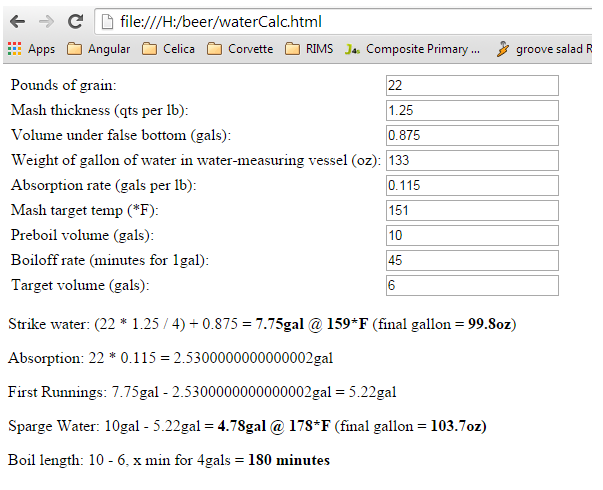tempestam83
Well-Known Member
So I brewed a 3-gallon IPA yesterday and got 76% efficiency which I was super excited about because that's highest I've gotten thus far.
However, at the end of my boil my OG was low. I use Brewer's Friend for all my brewing and with this recipe I was supposed to be at 1.073 but only came in at 1.06.
Grain bill is as follows:
8 lb American - Pale 2-Row 37 88.9%
4 oz American - Caramel 60L 2.8%
4 oz Flaked Wheat 2.8%
4 oz German - Melanoidin 2.8%
4 oz Canadian - Honey Malt 2.8%
I did a 70 min. 6 gallon mash at 150. Took out the bag, brought temp up to 170 for a 10 minute mashout with lots of stirring and squeezing at the end.
After a 70 min. boil I had about 4.5 gallons left and gravity at 1.060
Any thoughts?
However, at the end of my boil my OG was low. I use Brewer's Friend for all my brewing and with this recipe I was supposed to be at 1.073 but only came in at 1.06.
Grain bill is as follows:
8 lb American - Pale 2-Row 37 88.9%
4 oz American - Caramel 60L 2.8%
4 oz Flaked Wheat 2.8%
4 oz German - Melanoidin 2.8%
4 oz Canadian - Honey Malt 2.8%
I did a 70 min. 6 gallon mash at 150. Took out the bag, brought temp up to 170 for a 10 minute mashout with lots of stirring and squeezing at the end.
After a 70 min. boil I had about 4.5 gallons left and gravity at 1.060
Any thoughts?



![Craft A Brew - Safale BE-256 Yeast - Fermentis - Belgian Ale Dry Yeast - For Belgian & Strong Ales - Ingredients for Home Brewing - Beer Making Supplies - [3 Pack]](https://m.media-amazon.com/images/I/51bcKEwQmWL._SL500_.jpg)























































